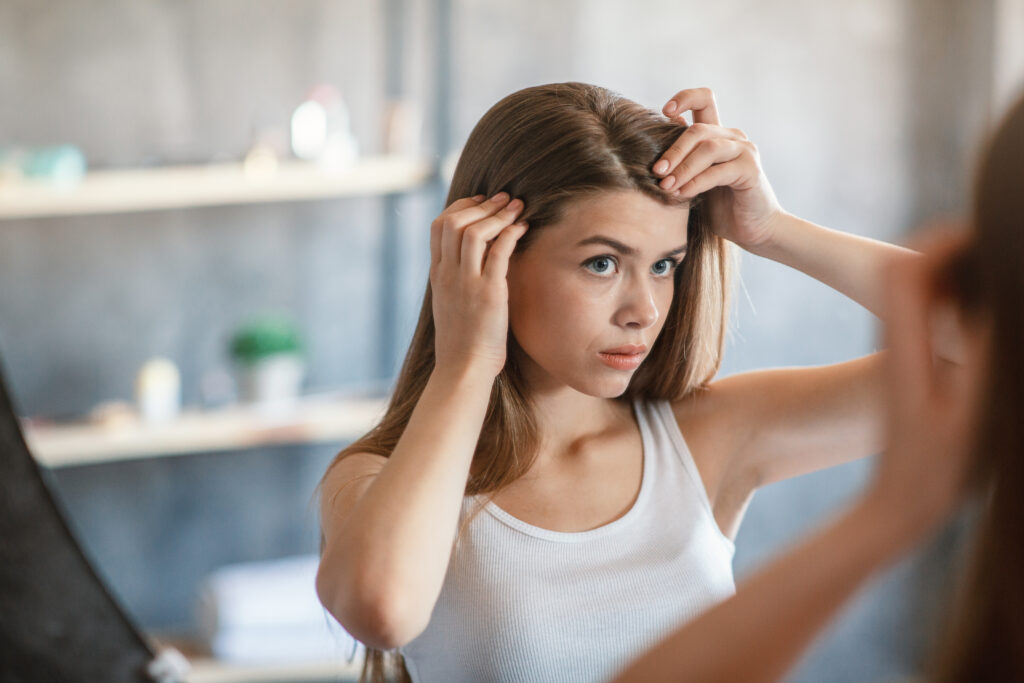Nothing ruins a good hair day like unsightly white flakes on your already sticky hair. While there is no harm with dry shampoo, leaving your mane unwashed for days can cause scalp build-up.
To let you in on this unfriendly hair woe, scalp build-up happens when dirt accumulates on your scalp. And by “dirt”, we mean a mixture of sebum, products, pollution, dead skin cells, and even pollen and smoke residue! While this phenomenon may be linked to a plethora of causes, it all leads to the same effect. The hair covering the scalp creates a surface microenvironment that promotes microbial growth. When these microbes gang up on your scalp, they will start feeding on the pesky build-up. This means a higher risk of dandruff, seborrheic dermatitis, and hair loss.
Hair experts may forgive us for thinking that scalp build-up is only a superficial dilemma. The truth is, removing it is much harder, and it often requires more than shampooing. Check out this guide to help you eradicate scalp build-up once and for all!

Read more: 4 ways to achieve the appearance of large pores
Wash your hair more frequently.
The perfect haven for scalp build-up is unwashed hair. The first step to removing this is to wash your hair more frequently. If you have an oily scalp, you should cleanse your locks every day or every other day. If you have dry, damaged, or coloured hair, apply a conditioner once every three to five days.
And use clarifying shampoo while we’re at it!
Now that we’re on the subject of washing your hair, switching to a clarifying shampoo also helps. While regular shampoos help remove dirt and excess oil from your scalp, clarifying or anti-residue shampoos go above and beyond. They remove all residue from your scalp but note that you should only use this once a month. As good as they are, anti-residue products can also dry out your hair, causing frizz and damage.

Exfoliate your scalp.
Your scalp is also a part of your skin, meaning it needs exfoliation the same way your face does. Use a scalp brush with soft, gentle bristles when you’re shampooing. This helps gently exfoliate dead skin cells and dirt that may lead to scalp build-up. You can also massage the scalp, but make sure to use your finger pads rather than your nails. Scratching your scalp with your nails may damage its skin barrier and lead to additional problems.
Time for some deep conditioning.
Deep conditioners not only add moisture to your hair but also aid in removing residue. Conditioners contain excellent clarifying agents such as activated charcoal and lactic acid – they clear out residue well! You can use them after shampooing to layer the benefits on your hair and scalp.

To the salon!
Sometimes, all you need is a trip to the salon for a scalp treatment. It hydrates, exfoliates, and deeply cleanses your scalp while adding a soothing touch. Many salons and spas also offer scalp scrubs, facials, and steam treatments for a deeper clean and care session.
See a dermatologist.
If you have tried everything and still nothing does the trick, it’s time to consult a dermatologist. If you also notice redness, itch, or irritation, specialists can diagnose the cause and give you medicated shampoos or treatments. You may be dealing with a more severe skin condition like dermatitis, and it’s best to leave it to the skin pros.
Read more: How to achieve fairer poreless skin

